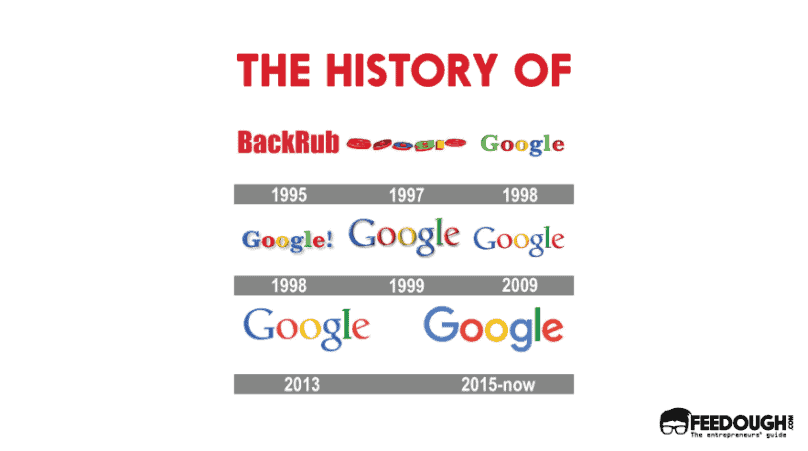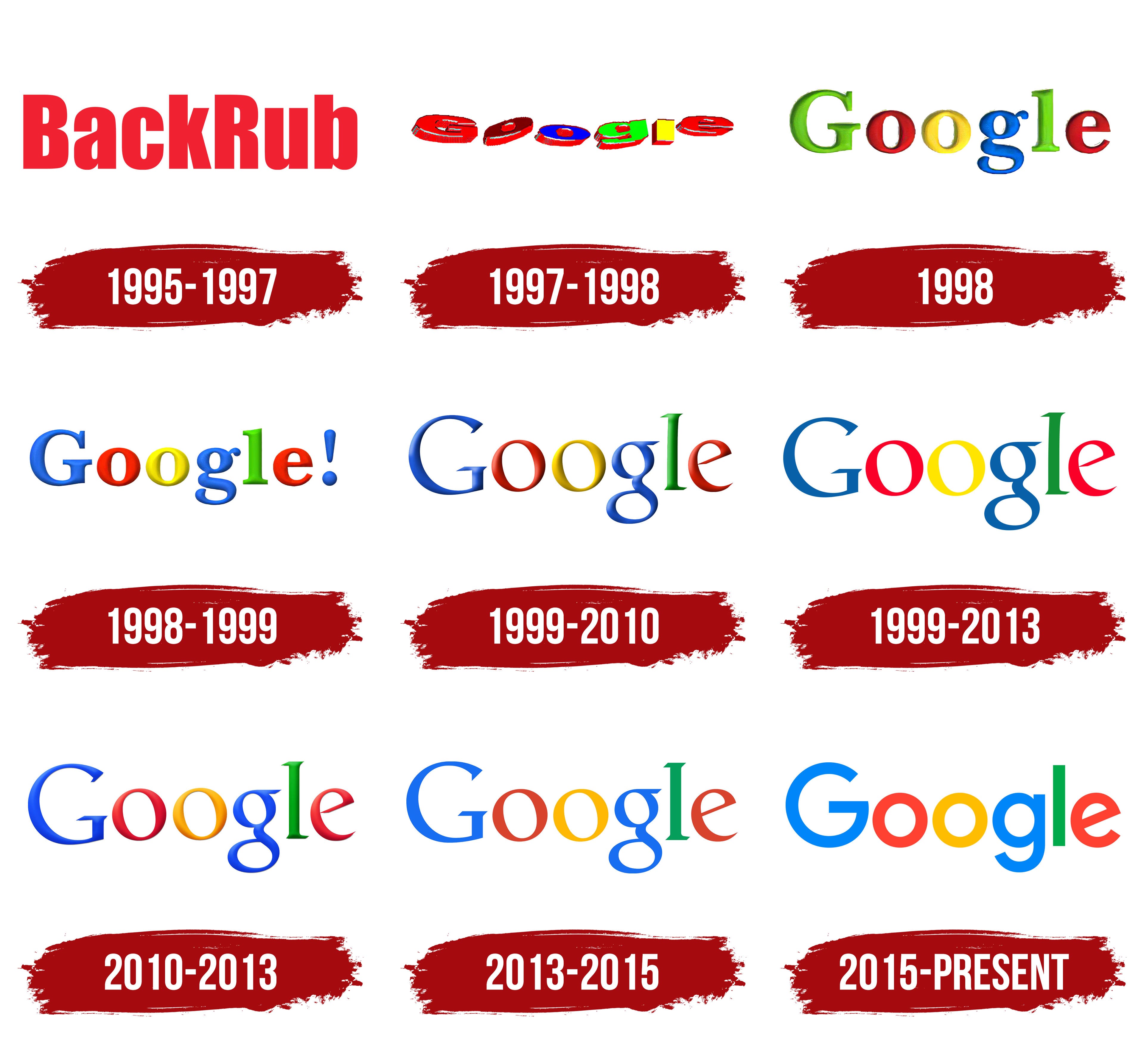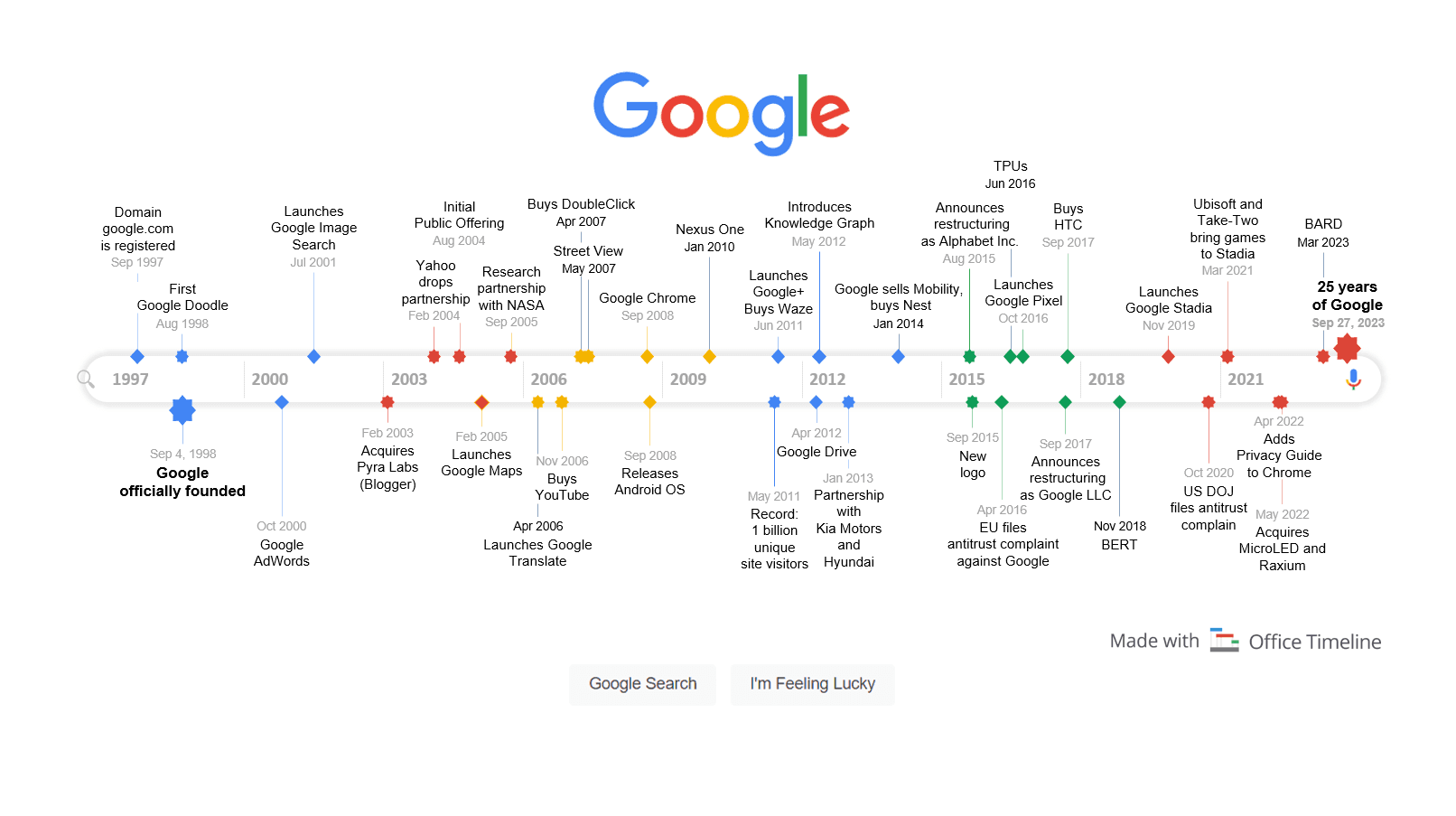How Old Is Google? Unveiling The Tech Giant's Journey
Have you ever paused to consider just how deeply Google is woven into the fabric of our daily lives? From searching for information to navigating our commutes, managing our emails, and entertaining ourselves with videos, it’s almost impossible to imagine a world without it. But how old is Google, this ubiquitous digital companion? Its story is one of rapid innovation, ambitious expansion, and a relentless pursuit of organizing the world's information.
Understanding Google's age isn't just about a number; it's about appreciating the incredible journey from a university research project to a global powerhouse. It's a tale that began in the mid-90s, evolving from humble beginnings into a company that now impacts billions across the globe. Join us as we delve into the definitive timeline of Google's inception, its pivotal milestones, and how it came to shape the digital landscape we know today.
Table of Contents:
- The Genesis: A Stanford Research Project
- The Birth of a Giant: Google Is Founded
- Google in 1998: A Glimpse into the Past
- How Old Is Google Today? Calculating Its Age
- The Evolution of Google: From Search to Ecosystem
- Diversification Beyond the Search Bar
- Google Under Alphabet Inc.: A New Era
- Google's Impact on the Digital World
The Genesis: A Stanford Research Project
The story of Google, and consequently the answer to "how old is Google," doesn't begin with a grand corporate launch, but rather in the quiet halls of academia. It was in 1996 that Larry Page and Sergey Brin, two bright Ph.D. students at Stanford University, embarked on a research project that would unknowingly lay the groundwork for a digital revolution. Their goal was ambitious yet elegant: to improve the way information was organized and retrieved on the burgeoning World Wide Web.
At the time, existing search engines ranked results based on how many times a search term appeared on a page. Page and Brin, however, theorized that a more effective system would analyze the relationships between websites. They developed "PageRank," an algorithm that measured the importance of a page by counting the number and quality of links pointing to it. This concept, akin to academic citation, meant that a page was considered more important if other important pages linked to it. This innovative approach quickly set their project apart, demonstrating superior relevance in search results compared to its contemporaries. Their initial internal project was dubbed "BackRub" due to its analysis of "back links."
The name "Google" itself is a testament to their vision. It's a playful misspelling of "googol," a mathematical term for the number 1 followed by 100 zeros. This name was chosen to signify the vast amount of information the search engine aimed to organize and make accessible. From these humble, yet intellectually profound, beginnings at Stanford, the path was set for Google to emerge from a research endeavor into a commercial entity.
The Birth of a Giant: Google Is Founded
While the research began in 1996, the official founding date of the company, and thus the true answer to "how old is Google," is September 4, 1998. This pivotal date marks the moment Larry Page and Sergey Brin officially incorporated Google Inc. What started as a promising academic project quickly transitioned into a full-fledged startup, initially operating out of a garage in Menlo Park, California. This humble setting has since become a legendary part of Silicon Valley lore, symbolizing the entrepreneurial spirit that fuels technological innovation.
By 1998, their search engine was already demonstrating its superiority, quickly becoming the world's leading search engine. The shift from a university project to a commercial enterprise was driven by the clear potential of their technology to revolutionize how people accessed information online. They secured initial funding and began the arduous task of scaling their innovative search algorithm to handle the rapidly expanding internet. The simplicity and effectiveness of their approach resonated deeply with early internet users, who were often frustrated by the cluttered and less relevant results provided by competing search engines. This marked the true commercial beginning of the company that would grow to dominate the digital world.
Google in 1998: A Glimpse into the Past
To truly understand how old is Google, it's fascinating to travel back in time and experience the internet as it was when Google first emerged. The original 1998 Google homepage was a stark contrast to the feature-rich, personalized experience we have today. It was a reflection of the early internet: simple, clean, and remarkably minimalist. Loading the Google 1998 page today, perhaps through tools like Archive.org's Wayback Machine, is like opening a time capsule from the past.
The Simplicity of the Original Interface
The 1998 Google interface was incredibly straightforward. It featured the classic logo (though not yet the polished version we recognize today, it was still evolving), a single search bar, and two buttons: "Google Search" and "I'm Feeling Lucky." There were no distracting ads, no complex navigation menus, and certainly no personalized recommendations. This simplicity was a deliberate choice, reflecting the founders' desire for a fast, uncluttered search experience that prioritized relevant results above all else. Users could search the web with the early Google algorithm, which, even in its nascent form, was far more effective than its competitors. Links to "Stanford Search" and "Linux Search" were also visible, nodding to its academic origins and the open-source community that helped power its early infrastructure. It was a testament to the idea that powerful technology didn't need a flashy facade to be effective.
The First Google Doodle: A Playful Beginning
Even in its early days, Google showed signs of the playful, user-centric culture that would define it. The very first Google "doodle"—a playful, decorative version of the iconic logo—appeared in 1998. This wasn't a commercial stunt but a simple, creative way for the founders, Larry Page and Sergey Brin, to signal their absence from the office. They were attending the Burning Man festival, and the doodle, featuring a stick figure behind the second 'O' in Google, served as an "out of office" message, letting users know that if the servers crashed, they weren't around to fix them immediately. This small, whimsical gesture set a precedent for what would become a beloved tradition, showcasing Google's personality and its connection to cultural events, long before it became a global phenomenon.
How Old Is Google Today? Calculating Its Age
So, let's definitively answer the question: how old is Google? Given its founding date of September 4, 1998, Google is 26 years old as of 2024. This quarter-century span has seen Google transform from a simple search engine into a sprawling technological empire, fundamentally reshaping how we interact with information and technology.
The journey from a dorm room project to a company that makes hundreds of products used by billions of people across the globe is nothing short of remarkable. While the "lego servers" of the early days have long been replaced by massive data centers, and the company dogs have surely multiplied, the core passion for building technology for everyone has remained. This enduring spirit, from the Stanford campus to a garage, and now to vast corporate campuses worldwide, defines Google's continuous evolution. Its age reflects not just time passed, but an incredible trajectory of growth, innovation, and unparalleled influence on the digital world.
The Evolution of Google: From Search to Ecosystem
Google's ascent wasn't merely about maintaining its lead in search; it was about strategically expanding its offerings to build a comprehensive digital ecosystem. The company understood early on that to remain at the heart of most internet users' experience, it needed to diversify. Over the years, Google has introduced a plethora of services that have become indispensable to modern life.
Pivotal Years: 2004 and 2005 of Rapid Expansion
While the question "how old is Google" points to its founding in 1998, its ascending profile marked 2004 as a truly pivotal year for product expansion. This year saw the release of several groundbreaking services that would become cornerstones of Google's empire. Gmail, Google's free email service, launched with an unprecedented 1 GB of storage, challenging established players like Hotmail and Yahoo Mail. Google Scholar provided a specialized search engine for academic literature, while Desktop Search allowed users to search files on their own computers. Google Talk entered the instant messaging arena, and perhaps most significantly, Google acquired Keyhole Inc., a company whose technology would become the foundation for Google Earth, revolutionizing how we view and navigate the planet.
2005 saw similarly ambitious launches and deals, further cementing Google's commitment to diversification. This period was characterized by rapid innovation and strategic acquisitions that broadened Google's reach far beyond its initial search capabilities. These years demonstrated Google's foresight in anticipating user needs and building products that would integrate seamlessly into their digital lives.
The Acquisition of YouTube: A Multimedia Powerhouse
One of Google's most impactful moves came in 2005 with the blockbuster acquisition of the video streaming upstart, YouTube. This acquisition, which further extended Google's reach and made it a multimedia powerhouse, was a visionary step. At the time, online video was still in its infancy, but Google recognized its immense potential. Integrating YouTube into its portfolio meant that Google wasn't just organizing text-based information; it was now at the forefront of the burgeoning world of online video content. This strategic move solidified Google's position not just as a search giant, but as a dominant force in digital media and entertainment, profoundly influencing how content is created, shared, and consumed globally.
Diversification Beyond the Search Bar
Google's journey from search to cell phones and beyond showcases its relentless drive for innovation. The company understood that the internet was evolving, and so too must its offerings. Over the years, Google diversified its offerings, introducing services like Google Maps, which transformed navigation, and Google Drive, which revolutionized cloud storage and collaborative work.
A significant leap came with the development of Android. Google's journey from being a search company to a major player in the mobile operating system market was transformative. Android, an open-source mobile operating system, quickly became the most widely used smartphone platform globally, placing Google's services directly into the hands of billions. This move was crucial in ensuring Google's continued relevance in a world increasingly dominated by mobile devices.
In 2008, Google released Chrome, a lightweight, speedy, and minimalist web browser. Chrome directly challenged Microsoft's Internet Explorer and Apple's Safari, quickly gaining market share and becoming the world's most popular web browser. This strategic move ensured that Google maintained control over the gateway to the internet, providing a seamless and integrated experience for users of its various services. Today, Google makes hundreds of products used by billions of people across the globe, from YouTube and Android to Gmail and, of course, Google Search. This vast portfolio underscores the incredible growth and diversification that has occurred since the question "how old is Google" first became relevant.
Google Under Alphabet Inc.: A New Era
In 2015, Google embarked on a significant structural change, becoming a subsidiary of a new holding company named Alphabet Inc. This restructuring was a strategic move designed to provide greater transparency and autonomy to Google's various ventures, allowing them to operate more independently while still benefiting from the parent company's resources. Larry Page became the CEO of Alphabet, and Sundar Pichai took over as the CEO of Google.
This new era under Alphabet Inc. allowed Google to continue focusing on its core search and advertising businesses, while other ambitious projects—often referred to as "Other Bets," such as Waymo (self-driving cars), Calico (biotechnology), and Verily (life sciences)—could pursue their long-term goals outside the immediate pressures of Google's main operations. This organizational shift highlights Google's continued commitment to innovation and exploring new frontiers, even as it maintains its dominant position in the digital world. More than 70% of worldwide online search requests are handled by Google, placing it squarely at the heart of most internet users' experience, a testament to its enduring relevance and authority.
Google's Impact on the Digital World
The story of how old is Google is not just a chronological account; it's a narrative of profound impact. Since its launch in 1997 (as a research project) and its founding in 1998, Google Search has continued to evolve relentlessly to help you find the information you're looking for. The web and the world have changed dramatically over the years, and Google has consistently adapted, often leading the charge.
Google's influence extends far beyond its search bar. Its innovations have democratized access to information, enabled global communication, and fueled countless businesses. From algorithm updates that refine search results to new services that integrate seamlessly into our lives, Google's commitment to organizing information and making it universally accessible and useful has been unwavering. Data plays a crucial role in this, helping to make Google services more useful for you, allowing for personalized experiences and relevant results. Users can even sign in to review and manage their activity, including things they’ve searched for, websites they’ve visited, and videos they’ve watched, highlighting the personalized nature of its services. This continuous evolution and commitment to user utility ensure Google remains an indispensable part of the digital world.
Conclusion
In summing up, the question "how old is Google?" leads us through a fascinating journey. From its origins as a Stanford University research project in 1996, officially founded on September 4, 1998, Google stands at 26 years old as of 2024. Its trajectory from a simple, clean search engine operating out of a garage to a global technology behemoth under Alphabet Inc. is a testament to its foundational vision and relentless innovation.
We've explored its minimalist beginnings in 1998, the early playful doodles, and its explosive growth through pivotal years like 2004 and 2005, marked by the launch of Gmail, Google Earth, and the strategic acquisition of YouTube. Google's diversification into Android, Chrome, Maps, and countless other services has cemented its role at the very heart of the internet experience for billions worldwide. Its story is not just about age, but about an enduring commitment to organizing information and making technology accessible to everyone.
What are your earliest memories of using Google? Which Google product do you find most indispensable in your daily life? Share your thoughts and experiences in the comments below! And if you found this deep dive into Google's history insightful, consider sharing it with others who might be curious about the origins of this digital giant. Explore more articles on our site to continue your journey through the world of technology and innovation.

The History Of Google | Feedough

Google Logo, symbol, meaning, history, PNG, brand

History of Google timeline